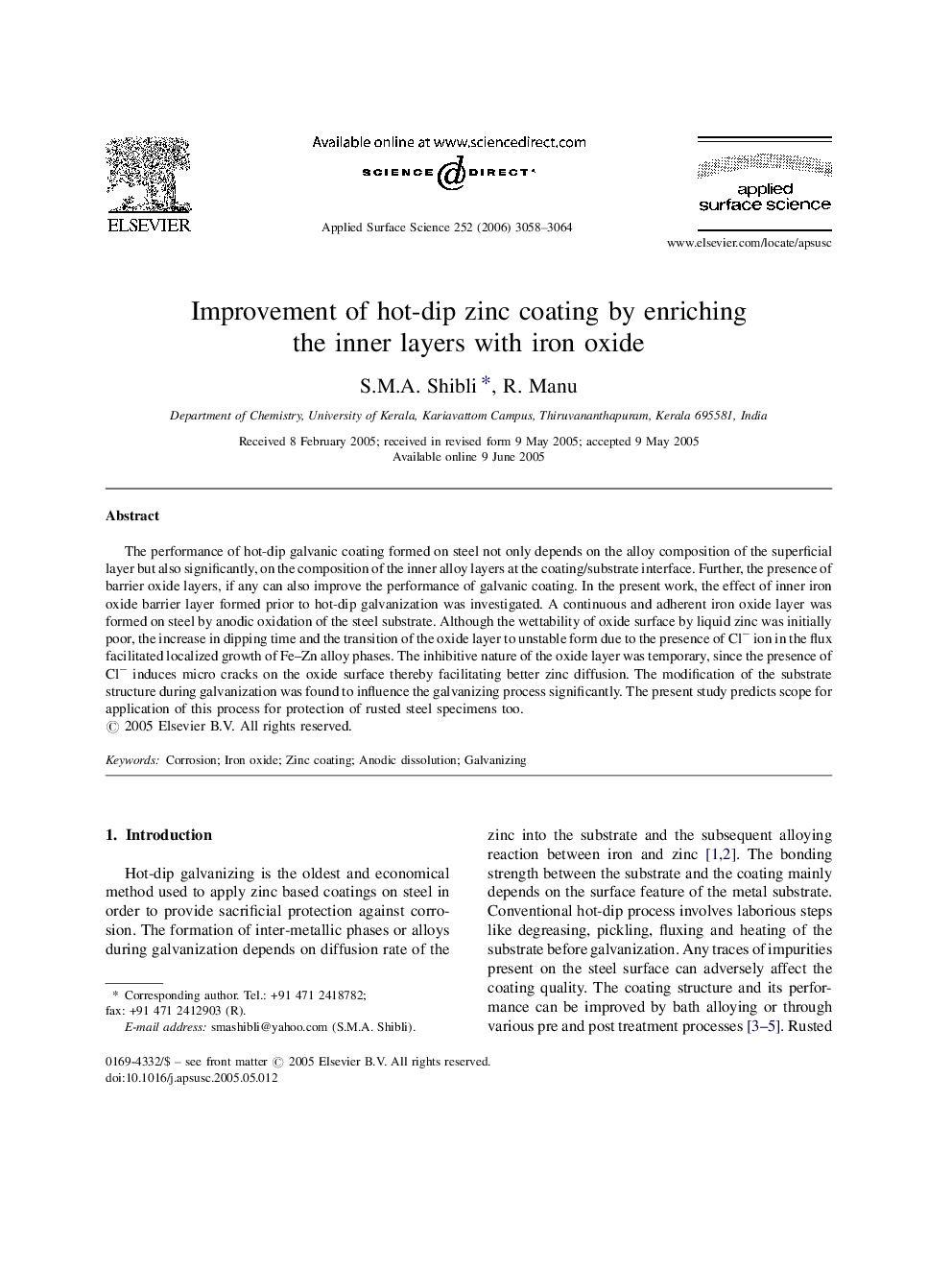| Article ID | Journal | Published Year | Pages | File Type |
|---|---|---|---|---|
| 5367203 | Applied Surface Science | 2006 | 7 Pages |
The performance of hot-dip galvanic coating formed on steel not only depends on the alloy composition of the superficial layer but also significantly, on the composition of the inner alloy layers at the coating/substrate interface. Further, the presence of barrier oxide layers, if any can also improve the performance of galvanic coating. In the present work, the effect of inner iron oxide barrier layer formed prior to hot-dip galvanization was investigated. A continuous and adherent iron oxide layer was formed on steel by anodic oxidation of the steel substrate. Although the wettability of oxide surface by liquid zinc was initially poor, the increase in dipping time and the transition of the oxide layer to unstable form due to the presence of Clâ ion in the flux facilitated localized growth of Fe-Zn alloy phases. The inhibitive nature of the oxide layer was temporary, since the presence of Clâ induces micro cracks on the oxide surface thereby facilitating better zinc diffusion. The modification of the substrate structure during galvanization was found to influence the galvanizing process significantly. The present study predicts scope for application of this process for protection of rusted steel specimens too.
